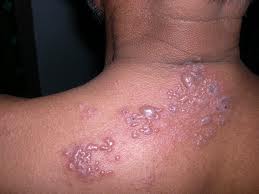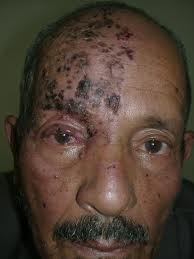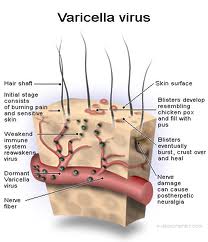Post herpetic neuralgia is a nerve disease occurs after an attack of herpes zoster infection. Herpes zoster or ‘shingles’ is a viral infection which affects the skin, especially sides of the chest, caused by varicella zoster virus. This is the same virus which causes chicken pox in children.

After an episode of herpes, the virus remains dormant in the nerve tissues of the body. This virus may become active when the immunity of the individual reduces or during convalescence after a major illness, resulting in blisters on the skin, known as shingles. It is accompanied with a rash which disappears without major consequences in about two to four weeks. Around 50% of individuals with shingles go on to develop post herpetic neuralgia (PHN) or after-shingles pain.
The neuralgia begins when the herpetic erruptions begin to heal. The pain appears usually in the affected dermatone or the affected nerve course and results in severe pain in the region which has the same nerve supply. The pain is a drawing, pricking type of intense pain, sometimes accompanied with burning sensation of the skin. The pain lasts from a few weeks to few months, rarely years.
Causes/risk factors
- Severe rash within three days of shingles infection

- A study shows that, 65% of patients were women
- The chances of developing PHN, increases when the shingles occurs in persons over 50 years.
- The incidence of herpes zoster is up to 15 times higher in HIV-infected patients than in uninfected persons, and as many as 25 percent of patients with Hodgkin’s lymphoma develop herpes zoster.
- Blacks are one fourth as likely as whites to develop this condition.
- Site of HZ involvement
- Lower risk – Jaw, neck, sacral, and lumbar
- Moderate risk – Thoracic
- Highest risk – Trigeminal (especially ophthalmic division), brachial plexus
Signs and symptoms
- A pain that continues for 3 months or more, after the healing of shingles, is defined as PHN.
- PHN pain may be burning, aching, itching and sharp and the pain can be constant or it can come and go
- The skin which was affected with blisters, may show scarring
- The involved deramatome may show altered sensations, either hypersensitivity or reduced sensitivity.
- In rare cases,where if the nerves involved also control muscle movement, the patient might also experience muscle weakness, tremor or paralysis
Homeopathic approach:
Homeopathy works well in cases of neuralgias. Homeopathic medicines have proven efficacy in the treatment of all sorts of neuralgia which include Post herpatic Neuralgia, Trigeminal Neuralgia, etc.





